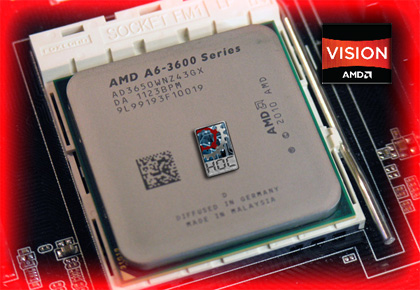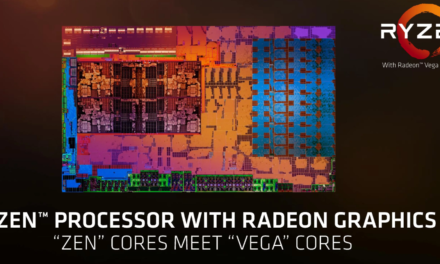
Tried: AMD A6-3650 APU and A8-3850 APU - this is not the real article


Measurements related to integrated graphics:
We arrived at the most exciting stage of the Llano test, where we scrutinized the capabilities of the Radeon HD 8D rumbling in the A3850-6550. The situation is not entirely fair, as the strongest APU competes in the category of around 30 HUF, while the Core i000-7k costs more than twice as much, which is now interesting from the point of view of the stronger Intel HD Graphics 2600 in this process. student IGP works, while Sandy Bridge units available in price category A3000-8 are available with HD 3850 IGP. However, as soon as we see the results, the fact that the Radeon HD 2000D doesn't care which Intel IGP you have to face will pretty much be outlined pretty slowly.
We’ve arrived for measurements related to integrated graphics, now we’ll see what the Radeon HD 6530D is capable of against its big brother, the HD 6550D and the Intel HD Graphics 3000. Of course, on a logical basis, it can be deduced what kind of picture the thing will paint, but it never hurts to know the specific numbers. Measurements were first performed with the standard 1600 MHz RAM clock signal and the then Catalyst. We then installed the latest WHQL driver available and repeated the tests. Finally, we increased the frequency of the RAM to 1866 MHz, and so we did a series.

In 3DMark Vantage, the Radeon HD 6550D instantly gives you a taste of what wood it was carved from. Even the Sandy Bridge CPU cores in the CPU score can save Intel’s IGP, but the Performance result and GPU score give a clear signal that this fight will bring a close fight in the rarest of cases. The Radeon 6650D received about twice as many scores as the HD Graphics 3000.
Vantage under the GPU and P score, which is now interesting to us. As expected, the HD 6530D is wedged somewhere halfway between the HD 6550D and the HD 3000, and for sure, this Radeon is much stronger than the HD 3000.

In 3DMark11, due to the basic requirement of DirectX11 (Intel's IGP is lagging behind due to DX10.1, too) we could not include HD Graphics 3000, the HD 6790 jumped in its place. Obviously, the 6550D IGP could not compete with it, but setting proportions is not useless for the result. Under the Performance profile, the HD 6790 has a score of ~ 2,8 times higher. Considering that the HD 6790 is a $ 30 discrete controller and the HD000D is a unit integrated into a processor, and the entire package costs $ 6550, this is not a bad result for IGP.
In 3DMark11, due to the basic requirement of DirectX11 (Intel's IGP is lagging behind due to DX10.1, too) we could not include HD Graphics 3000, the HD 6790 jumped in instead. His score is just an interesting value, the focus is on the two IGPs. The HD 6530D is 30-35% slower than its brother. The newer Catalyst had a lesser role, the faster a memory more.

Video conversion measurements had previously been performed using only the CPU cores, of course the GPU acceleration test could not be missed either. The 2600k was measured at 2,9 GHz with the 4 core / 4 fiber setting paired with the built-in IGP, while the other configuration was paired with the HD 6790. Converting to DivX seems to be a big favorite of the Intel HD Graphics 3000 (in fact, the Intel Quick Sync Video dedicated decoder unit integrated into the processor plays a huge role in this), as it has beaten the Radeons terribly. The good news is that the A8-3850 comes in second with the HD6550D, which was able to run more efficiently than the Phenom + 6790 and 2600k + 6790 pairs. HD Graphics 3000 also takes pride in WMV encoding. For some reason, the 6550D isn’t so bright here and slips to the end of the field. Unfortunately, this format has been ported to both m2ts and h.264 formats, we have a feeling that software support for Llan is not yet a perfect fix and performance improvement that can be imagined in the future.
In the field of video coding, the 6530D produced interesting things, perhaps after the previous measurement as well as carving out software support. With DivX and wmv encoding, we don't see any signs of that yet, although the former is faster than the HD 6790 and only gets out of the 6550D and HD 3000, respectively, while the latter suddenly gets to last place. The surprise comes with m2ts and h.264 encoding. Converting to the PS3 took almost half as long as the HD 6550D, but it could take almost 264 seconds for the h.70 as well. In vain, there is a great need for continuous development of applications and drivers in this area.

Under Alien versus Predator, we looked at how much the game can be played with the Radeon IGP. The benchmark application is a very tough scene using DX11, of course for the playable level, tessellation and other extras should definitely be turned off for an IGP. With medium detail, at lower resolutions, you can reach the limit of what you can still play with, but overall, AvP is a big challenge for the Radeon HD6550D.
In AvP, due to the DX11, only the IGPs of the two APUs could compete with each other. The disadvantage of the smaller Radeon is 10-25% depending on the resolution, the newer drive and the faster memory couldn't really speed it up. In any case, at low resolution, the game remained close to playability even with the 6530D.

In Battlefield: Bad Company 2, Intel HD Graphics 3000 is back, of course he could only do the tasks with DX10.1 knowledge. As a result, it doesn't disturb much water, as the Radeon HD 6550D is much stronger at all resolutions, with a high setting at 1280 × 1024, it stays close to the playable level. At 1680 × 1050, it already slides thickly below 30 FPS, but that can't be blamed on him, since we're talking about an integrated unit that runs a serious FPS with just high quality and resolution, just look at the HD 3000's 13 FPS.
At Bad Company 2, the HD Graphics 3000 may have been back, though in its case, the DX11 parts were omitted. With the Intel solution, the HD 6530D is clearly faster, lagging behind the 6550D by 27-36-35%. With the smaller Radeon, this game also seems to play only at the lowest resolution, unfortunately. It also includes the fact that IGP couldn’t really profit from either the newer drive or the faster memory.

During Crysis 2, despite the DX9 mode, we expected the IGPs to fall, but this measurement was certainly good to demonstrate the difference between Intel’s current strongest and AMD’s current strongest IGPs. While none of these settings can produce a playable level, it is clear that Radeon is much stronger than its opponent.
For Crysis 2, we guessed it was going to be a big bite for unfortunate IGPs, but interestingly, we did the measurements with it, where we then saw a miracle on the Radeon HD 6530D. Although it was even more powerful at the lowest resolution, in 1280 × 1024 it was already able to catch up with the Catalyst 11.9, and with 1866 MHz RAM. We can see the same at the highest resolution. Unfortunately, this has not changed the fact that this game can provide a somewhat continuous image with IGP at a maximum of 1024 × 768, but it would be a fault to blame any integrated unit for this.

Using the Dirt3 High profile, the GPUs did quite well, producing even the Intel IGP at the lowest resolution, and the HD 6550D was able to squeeze out 50 FPS. As the resolution increases, the HD 3000 runs out of power, but the HD 6550D lasts all the time, even at 1680 × 1050 it was able to fly the Dirt30 above 3 FPS in High quality, which is a brilliant production from an APU.
In Dirt3, it was a little surprising the weak performance of the HD 6530D, where it was only able to get ahead of the HD Graphics 3000 with a few FPS. Keep in mind, though, that the Radeon is a DX11-capable model, while the core in Sandy Bridge can only run in DX10.1 mode. However, in this title it is also significantly lower than the big brother, the difference is 12-10-9 FPS, which means 31-35-39%. The fresh drive and faster RAM couldn’t improve the situation either.

From what I’ve seen so far, it wasn’t surprising that Far Cry 2 also brought the dominance of Radeon, which was able to stay there all the way to the 30 FPS dream limit and well above it at lower resolutions, while HD Graphics 3000 is no longer at 1024 × 768. you can take this game that is already quite old. If our future machine gets an A8-3850 APU, we can count on not having to give up Far Cry 2 if we want to play.
Far Cry 2 is not today's chicken anymore, it was run in DX10 mode. Here, the 6530D significantly outperformed Intel's solution, but the "respect" for the 6550D was also shown, which can be called a power difference. The difference of 10-8-7 FPS was quite a lot, in percentage 27-28-30%. The fresh driver and 1866 MHz were also ineffective here.

We arrived at the last member of the 28 charts with HawX 2. This combat aircraft simulator is a very well-optimized, modern software, as evidenced by the fact that even with the High profile, all IGPs could play levels at all resolutions. The HD 3000 is close enough to the Radeon HD 6550D based on FPS, but this is only possible because it ran the benchmark in DX9 mode, while the 6550D used its DX11 knowledge and still had 37 FPS of its own. to squeeze out at 1680 × 1050. Bravo A8-3850 APU!
Our concluding title is Hawx 2, in connection with which it should be noted again that the Intel HD Graphics 3000 again ran the benchmark in a different way than the Radeons, only in DX9, which is clearly reflected in the results. The Radeons worked with DX11, tessellation, and they still stood the mud nicely, the HD 6530D, which could put 1680 FPS on the table even at 1050 × 29. However, Catalyst showed no increase in performance, and we could also write a maximum of 1 FPS on the faster memory bill. The lag behind the HD 6550D is 28-30 percent.














